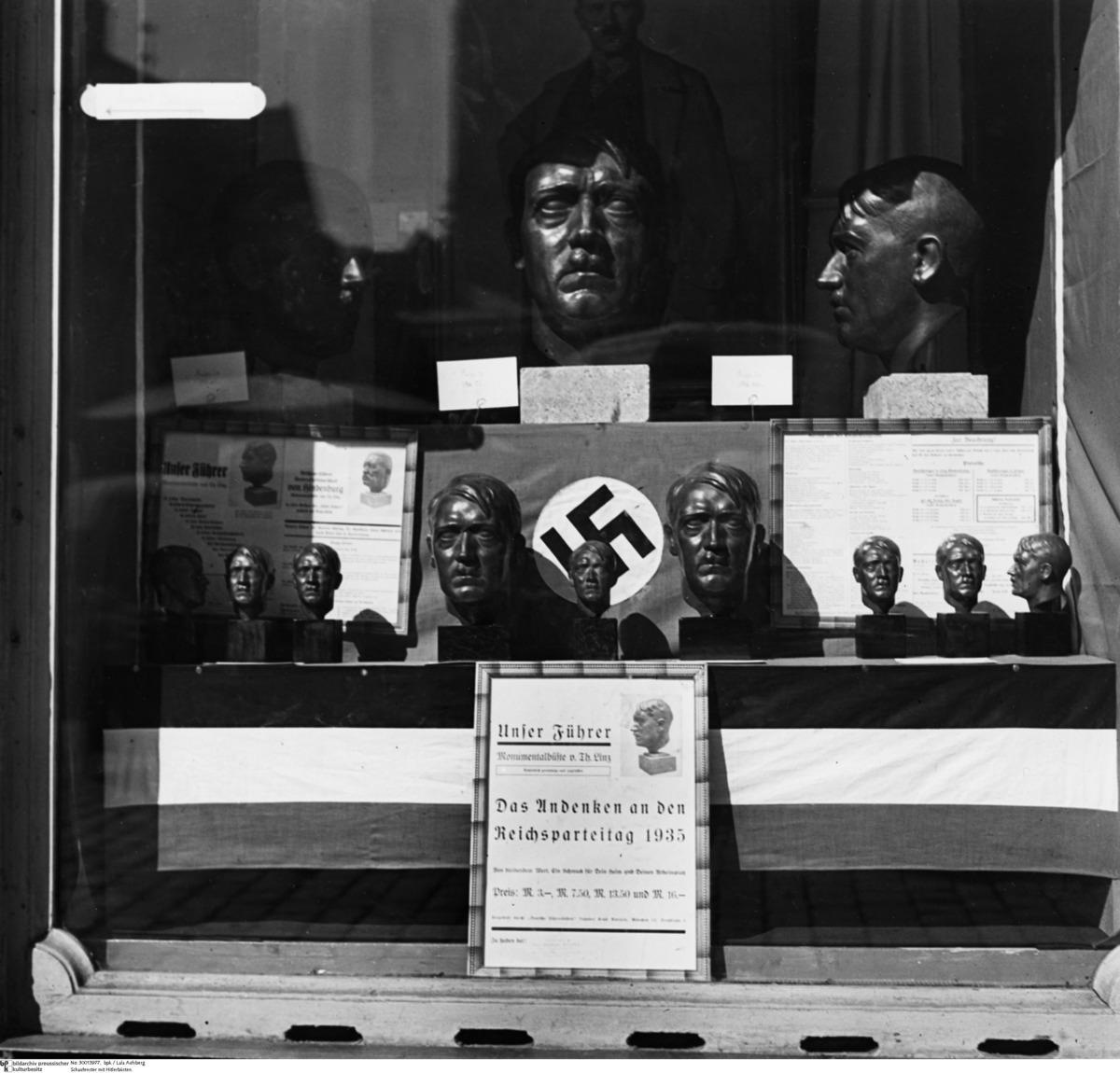Abstract
The most successful Nazi propaganda tool was the “cult of the Führer”
that operated around Hitler. Within the NSDAP, Hitler had already been
treated with near religious veneration since the early 1930s. After he
rose to power, the whole population was supposed to be involved in a
kind of collective Hitler worship. Magazine articles, films, posters,
postcards, and paintings represented Hitler as a multifaceted genius and
a man of the people wrapped up in one. The message was that Hitler had
recognized Germany’s problems and would eliminate them with a steady
hand. He was not concerned with fame or power, it was said, but rather
only with the nation’s welfare. In everyday life, the cult of the Führer
was supported through a multitude of gestures and rituals such as the
“Hitler salute.” A large segment of the German population remained loyal
to Hitler almost up to the war’s end. This loyalty persisted despite the
fact that the populace had begun turning away from the party in growing
numbers.
